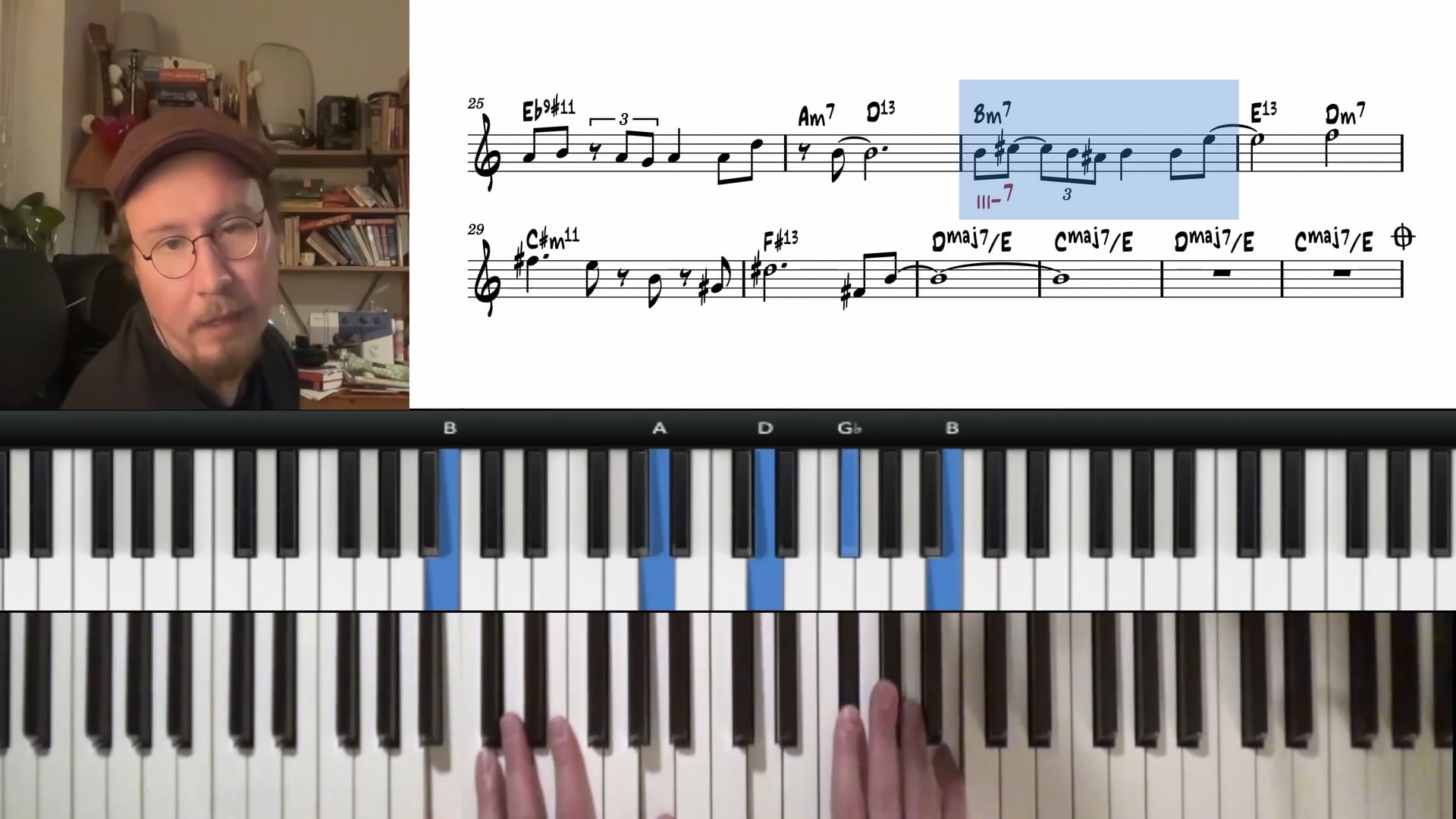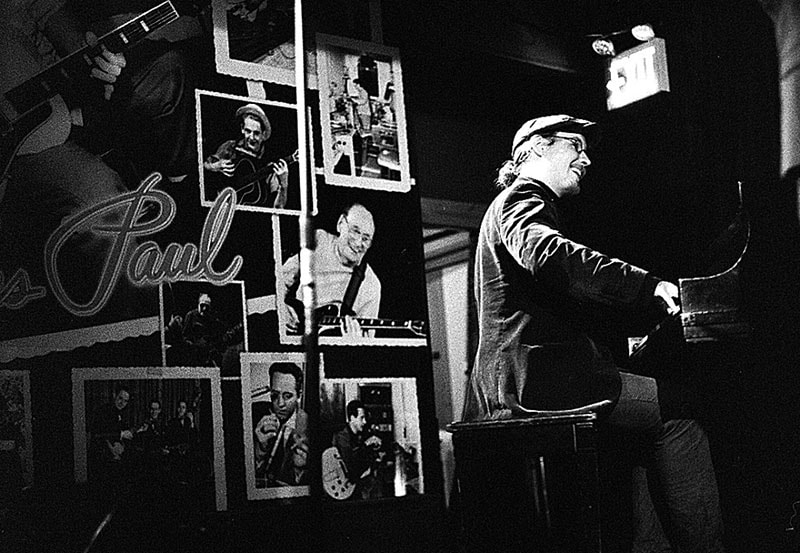

Tuomo Uusitalo
Tuomo is an award-winning pianist, composer, arranger and educator. Having released two albums as a leader, he has established himself in the New York jazz scene and continues touring internationally both as a leader as well as sideman.
Live Seminar Resources
Live Seminar Resources
PDF Downloads
- Dolphin Dance - Chord Chart
Join PianoGroove Pro to access all downloads and learning resources.
Download theory supplements, midi files, chord changes and full note-for-note transcriptions of every lesson.
- Dolphin Dance - Transcription
Join PianoGroove Pro to access all downloads and learning resources.
Download theory supplements, midi files, chord changes and full note-for-note transcriptions of every lesson.
Related Lessons
Seminar Description
Seminar Description
Exploring Modality in “Dolphin Dance”
Welcome to this workshop on Herbie Hancock’s “Dolphin Dance”, a masterpiece that blends modality and tonality to create a rich and sophisticated harmonic structure. This lesson explores the form, harmony, and improvisational aspects of the tune, helping you understand how Hancock navigates between tonal centers and modal sections to craft a compelling composition.
The Structure of “Dolphin Dance”
One of the defining features of “Dolphin Dance” is its unconventional form. Hancock employs a structure where the melody’s phrasing does not perfectly align with the solo form, a technique also found in tunes like “One Finger Snap”. This approach creates an intriguing, floating quality that challenges traditional jazz phrasing.
Additionally, the melody cleverly recycles motifs with subtle variations in harmony, demonstrating Hancock’s mastery of composition. Understanding these elements will help you develop a stronger sense of form and phrasing when playing the piece.
Tonal & Modal Sections
Identifying Tonal Sections
The tonal sections of “Dolphin Dance” primarily appear where there are functional ii-V-I progressions. Examples include:
- Bars 4-5: D-7 to G7 to C-7
- Bars 8-9: A-7 to D7, leading to Gmaj7
- Bars 21-22: C#-7 to F#7 moving towards a resolution
These progressions clearly establish tonal centers, creating moments of stability within the otherwise fluid harmonic landscape.
Understanding Modal Sections
Modal sections often feature static harmony and pedal tones, allowing for freer melodic movement. Examples in “Dolphin Dance” include:
- Bars 17-20: An F pedal creating a Mixolydian feel
- Bars 33-36: A section that does not resolve traditionally, emphasizing modal freedom.
Hancock’s ability to seamlessly transition between tonal and modal harmonies is one of the key reasons why this piece is so engaging.
Harmonic Devices & Improvisational Techniques
Use of Pedal Tones
Pedal tones serve as harmonic anchors, especially in modal sections. In “Dolphin Dance,” the G pedal and F pedal create space for improvisation, giving the soloist the freedom to explore different modes.
Tritone Substitutions
Throughout the piece, Hancock employs tritone substitutions to create unexpected harmonic shifts. For example, an A-7 to D7 could be replaced with Eb7, offering an alternative path to the next tonal center.
Diminished Harmony & Chromaticism
Hancock frequently uses diminished passing chords to connect harmonic movements smoothly. These passing diminished chords create tension and release, a technique essential to developing sophisticated voicings.
Herbie Hancock’s Solo Analysis
Hancock’s solo in the original 1965 recording (Maiden Voyage) is a masterclass in balancing simplicity and complexity. Key takeaways from his solo:
- He emphasizes guide tones (3rds and 7ths) to outline the harmony.
- He alternates between bebop lines in tonal sections and scalar/modal playing in modal sections.
- He utilizes motivic development, repeating small melodic ideas while adapting them to the changing harmonies.
By studying his phrasing, you can develop a deeper understanding of how to outline changes while maintaining a strong melodic focus.
5 Practice Tips
- Visualize the Form – Map out the tonal and modal sections, identifying where ii-V-I progressions occur and where modal harmony takes over.
- Practice Pedal-Tone Improvisation – Focus on soloing over the G and F pedal sections, exploring different modes while maintaining melodic coherence.
- Analyze the Harmonic Substitutions – Experiment with tritone substitutions and diminished passing chords to understand their role in connecting harmonic movements.
- Emphasize Guide Tones – When soloing, focus on the 3rds and 7ths to outline the harmony effectively.
- Transcribe & Imitate Hancock’s Lines – Work through his solo transcription, paying attention to his motivic development and phrasing choices.
Conclusion
Herbie Hancock’s “Dolphin Dance” is a brilliant study in modal and tonal interplay, offering deep insights into jazz composition and improvisation. By analyzing the form, harmony, and solo phrasing, you’ll develop a more nuanced approach to playing and improvising over modern jazz tunes.
Be sure to engage with the forum discussions on PianoGroove, where you can post questions and share your interpretations of the piece. Keep practicing, and enjoy the journey through Herbie Hancock’s harmonic world! 🎶





